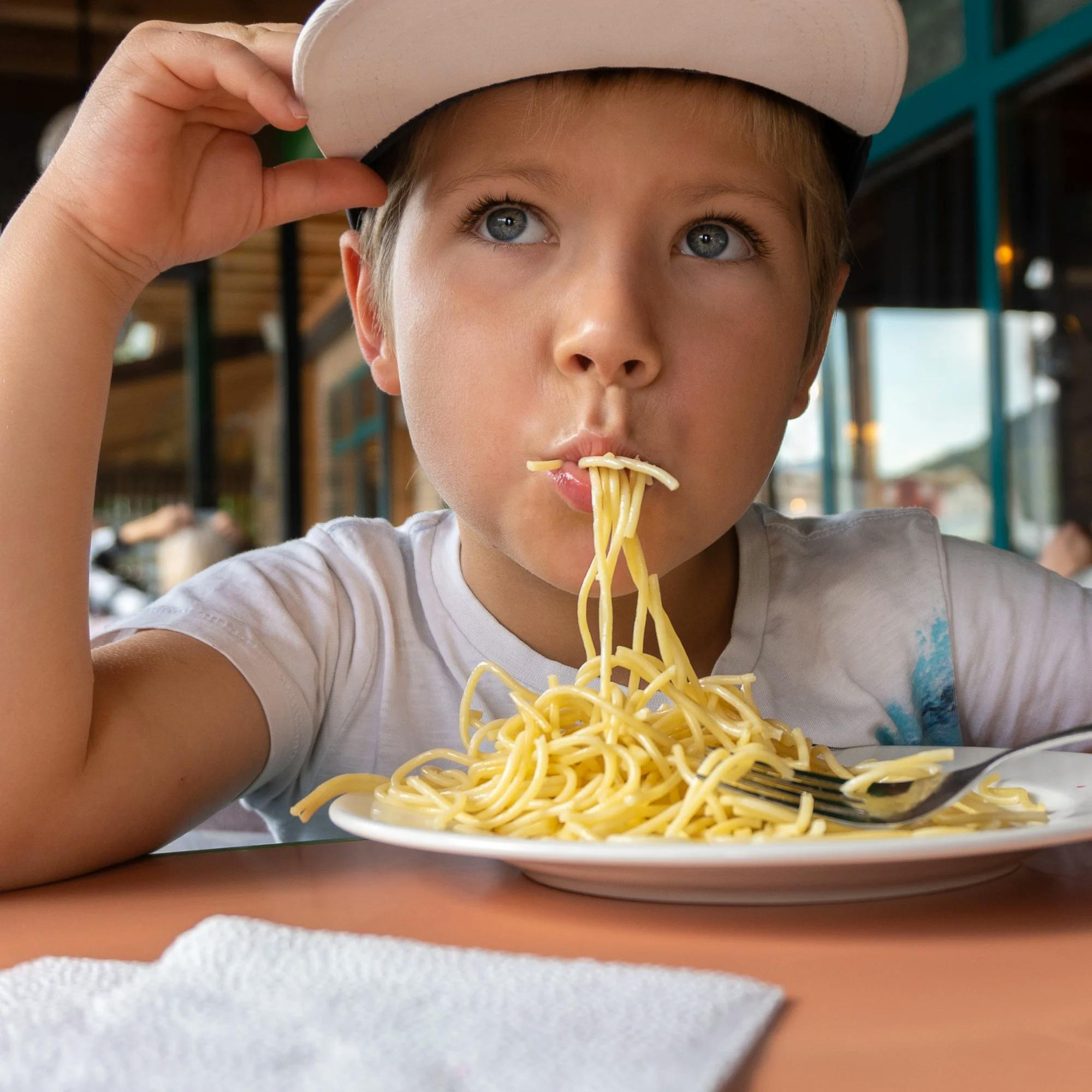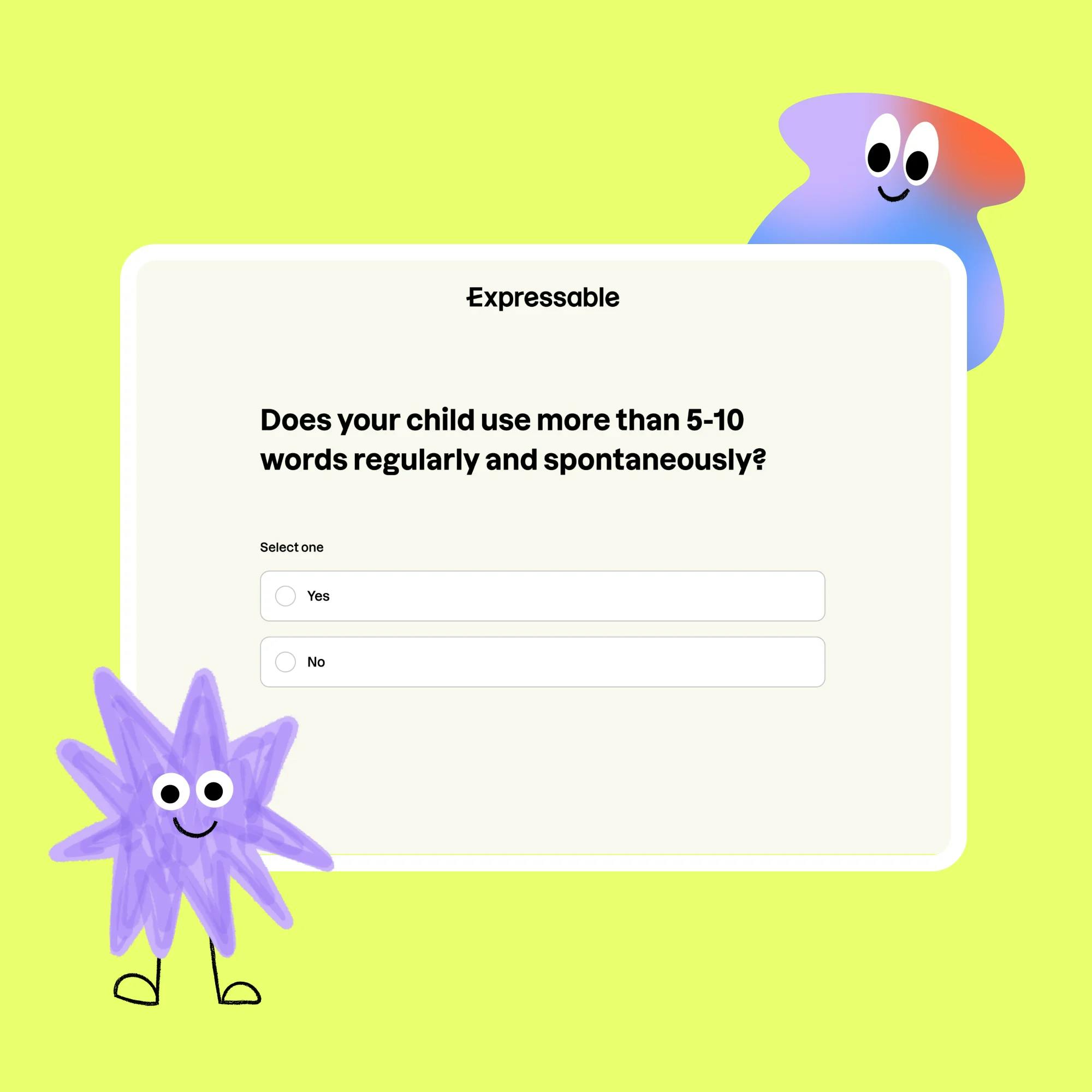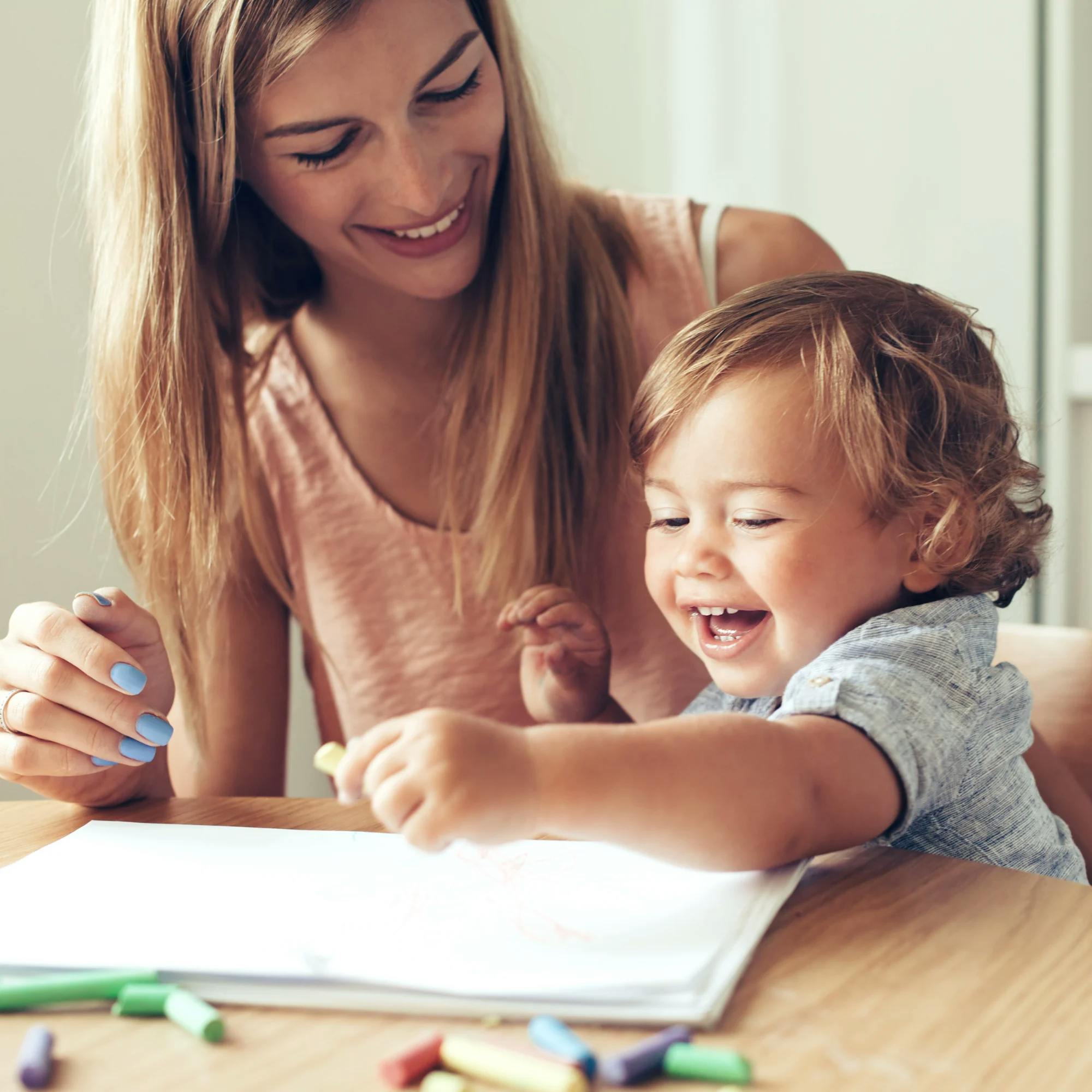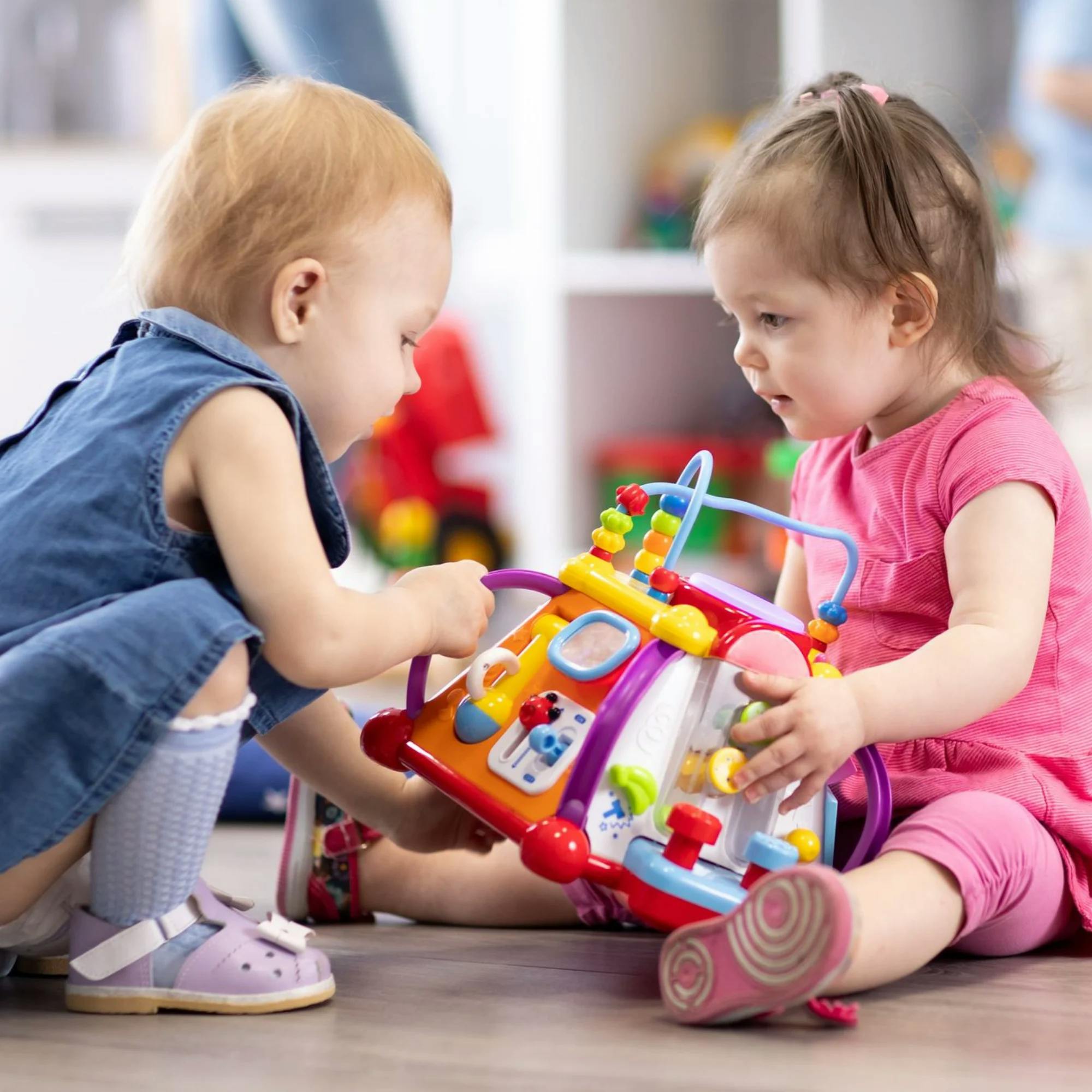No matter what age your kids are, mealtime may not be picture-perfect, with everyone sitting happily around the table and sharing about their day. Maybe one child needs help cutting their food, and the other is refusing to eat. Big sister might be nagging her little brother. Questions about the school day might yield answers like “I don’t know.”
In spite of all this reality, meals are a special chance to connect and communicate with your family. And since it’s a natural time to talk together, mealtime is a perfect opportunity to practice speech and language.
Whether it’s a weekend breakfast at home or dinner at a restaurant, we’re serving up some great tips for using this time to grow your child’s communication abilities!

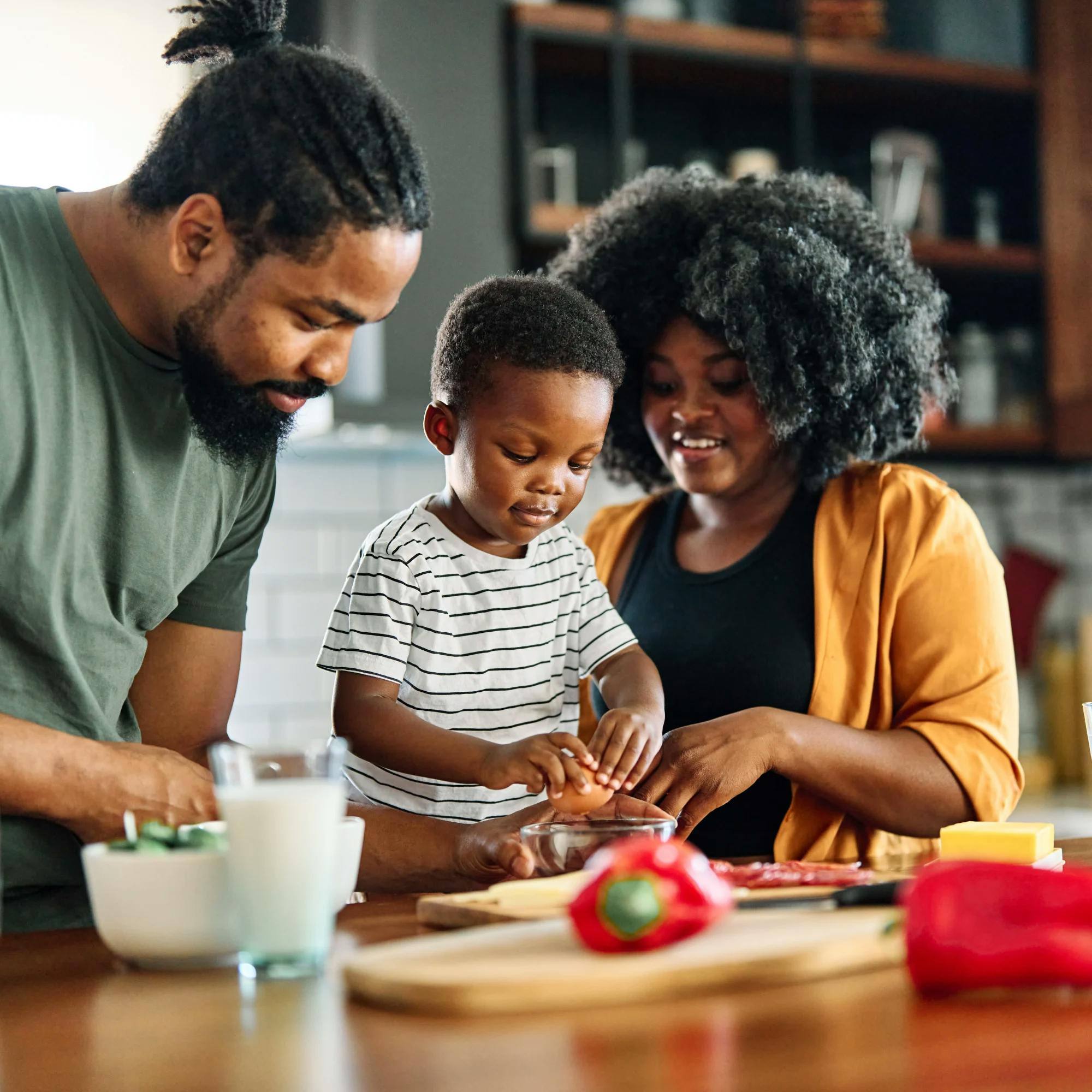
1 Practice sequencing during meal prep
One fun way to practice language skills can happen while you’re preparing to eat. This is a good opportunity to work on sequencing, or using words like first, then, next, and last.
Have your child help you make the food, set the table, or pour the drinks. As they do, ask them questions like, “What ingredient do we add in the bowl first?” or “What comes next after the placemats?” See how well your child can answer these questions.
Mealtime a good opportunity to work on sequencing, or using words like first, then, next, and last.
You can also try some fill-in-the-blank exercises. You can say, “First we mixed up the biscuit dough, then we need to _______.” See if your child can provide a reasonable answer.
Here’s another way to practice sequencing. Once you’re done cooking or setting the table, ask your child to retell the steps involved. Putting it all together can help your child learn to sequence short stories. They can practice saying things like, “First we added in the flour, then we mixed in the milk. Then we scooped out the dough. Last, we put the biscuits in the oven.”
Being able to tell a short story, in the order in which things happened, is a big deal! This skill will help your child be able to tell stories about their day in an organized way.
2 Help your child learn more words during meals
There are lots of chances to teach your child new words during everyday routines . Mealtime is a great example.
You can work on nouns, verbs, or adjectives–really anything! Pay attention to your child’s speech and notice if there are any parts of speech they don’t use often. You can start there, but keep in mind that practicing a variety of types of words is also a good idea.
For nouns, you can name items on the table, whether it’s utensils or food. If your child is just learning to talk, you can model the words and have them repeat after you. Maybe you say, “I see the cup” or “Here is your spoon.”
You can also focus on verbs associated with meal time. For example, you could model action words for your child like “I pour the juice” or “I mix the salad.”
Focus on new descriptive words related to the meal. Talk about the crunchy carrots or the spicy salsa.
For adjectives, focus on new descriptive words related to the meal. You can talk about the crunchy carrots, the cold milk, or the spicy salsa. For an older child, you could ask, “How would you describe this soup?”
No matter how your child is currently communicating, you can work on tasks right at their level. Give them as much support as needed to help them say the words. But realize when it’s time to pull back your help, as well. Over time, your child will become more independent in their ability to use these new words or phrases.

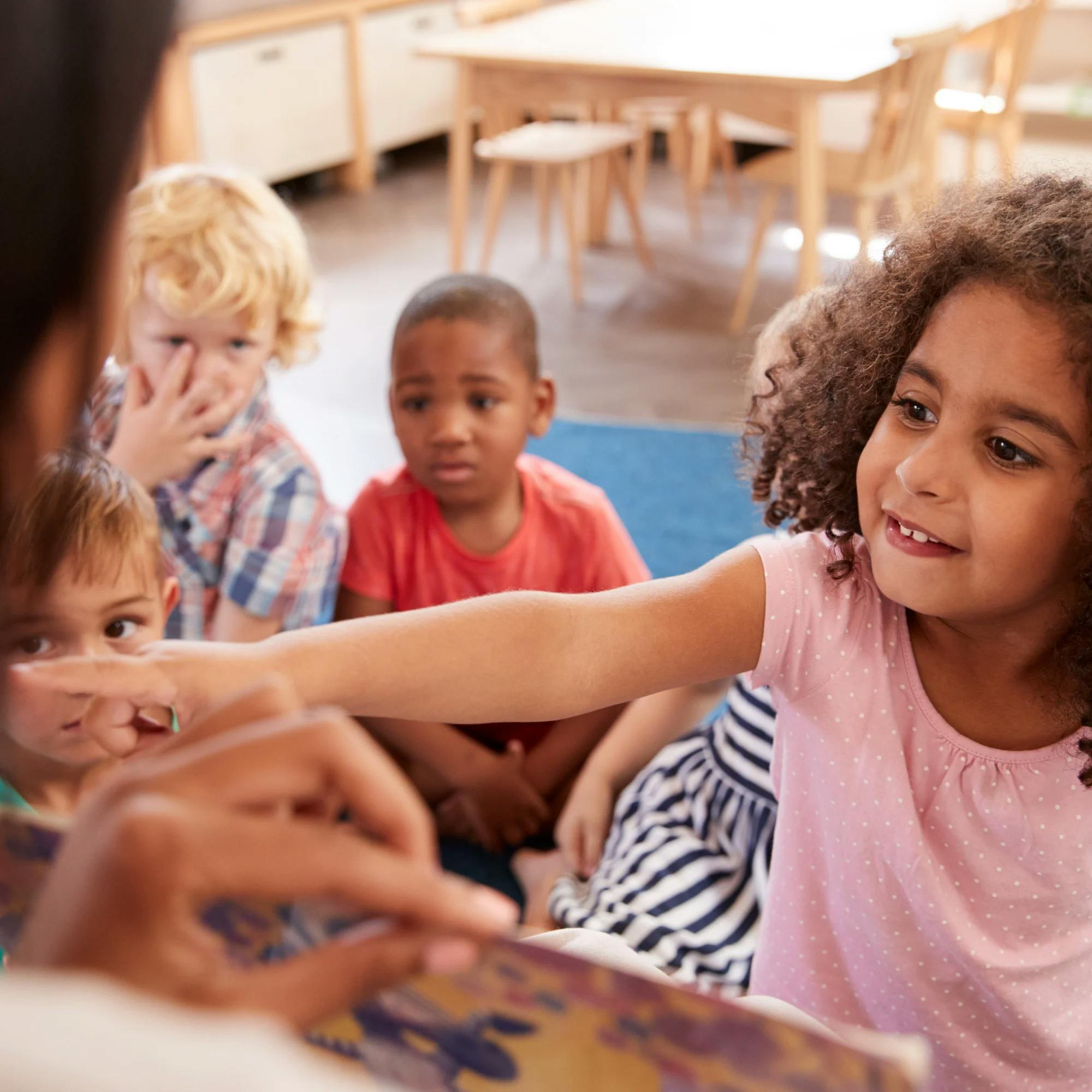
3 Put mealtime words into categories
You can make practice fun by working on categories. Let’s say you go out to a restaurant and everyone has something different to drink: soda, tea, and lemonade. Name these drinks for your child and ask them what they are. You might say, “I see soda, tea, and lemonade. What are all of these? They are all _______.” Your child should tell you that they’re drinks or beverages.
You can do this with fruits or vegetables, too. If green beans, broccoli, and potatoes are on the table, name them and ask your child, “What’s the same about all of these? They are all _______” and see if your child can tell you that they’re vegetables.
You can also name the category and help your child add to it. You can say, “We have a lot of vegetables on our table: green beans, broccoli, potatoes. What is the name of another vegetable we eat sometimes?”
4 Teach your child to answer questions
Answering WH questions is a major communication skill for kids to learn. WH questions are questions that begin with who, what, where, when, why, and how. (Although how doesn’t start with an “wh,” it’s often included because of its similarities in the type of answer it requires.)
Answering WH questions is a major communication skill for kids to learn.
You can start by asking your child questions about their food or the meal itself. Maybe, “What’s on your plate?” or “Where is your napkin?” If your child is very young or just beginning to talk, ask simple questions that they can answer based on what they see. But for older children, you can use WH questions to spark conversation. These can be questions like “Who did you play with at school?” or “What craft did you make today?” Think about topics that your child would be excited to tell you about, and go from there!

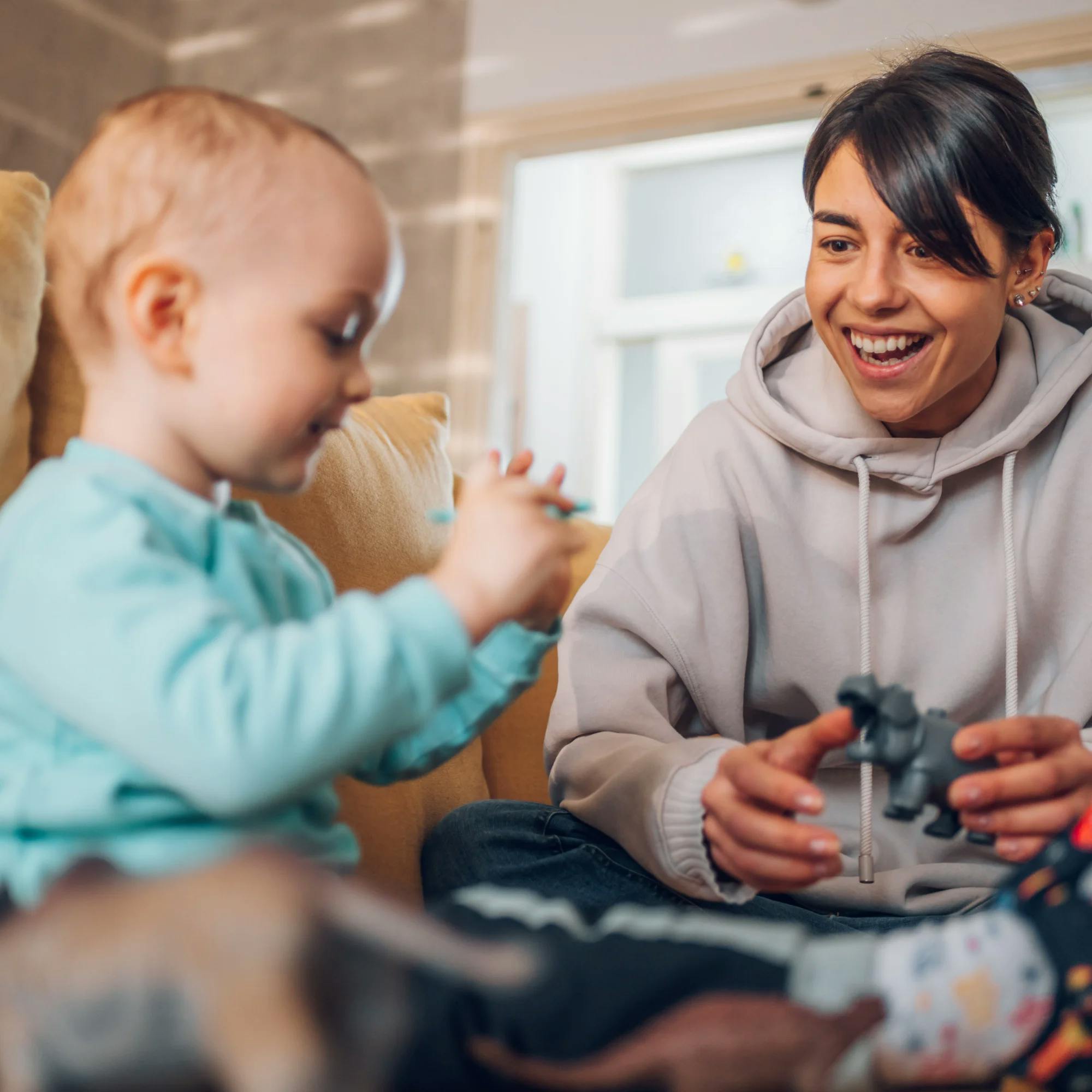
5 How to have a better conversation at the dinner table
To prompt your child to talk more at the dinner table, try asking open-ended questions. These are questions that need more than a yes-or-no answer. Maybe something like, “Tell me about your art project” or “What’s something that happened at recess today?”
To take the pressure off, you can also try making open-ended statements to encourage your child to respond. An example could be “I noticed Freddy running for the bus this morning” or “It seems like you had a lot of math homework today.”


If your child is just learning how to have a conversation, focus on the basics of two people talking back-and-forth. Point out how people take turns in a conversation. Give your child examples of how to respond, and show how you can ask a question to keep things moving. Your child may need help learning how to structure questions, or even knowing what questions they could ask. Help them with this as much as you need to! These are all skills that support social language development.


If your child needs some help with conversations, remember that simply watching you speak with others at the table is a great example for them. Maybe they hear you talk to their sibling and notice the exchange. They’ll soon learn how the give-and-take of conversation works and how to use it themselves.
Next time you sit down to a meal with your child, try some of these simple tasks. Practicing these language skills even just a few times a week can make a huge difference in your child’s communication growth. And it may even lead to some great conversations.
How Expressable Can Help
Concerned your child isn't reaching age-expected milestones? Looking for communication support from a professional? Expressable is a national online speech therapy practice serving children and adults. We treat all major areas of communication and feeding, offer flexible hours including evenings and weekends, and accept most major health insurance plans. We’re proud to have earned more than 3,000 5-star reviews from our clients (4.9/5 average).
Our therapy model is centered on parent and caregiver involvement. Research proves that empowering caregivers to participate in their loved one’s therapy leads to better outcomes. That’s why we combine live, 1-on-1 speech therapy with personalized education and home practice activities for faster progress.
Communication is more than words. It’s how we share how we feel and show who we are. We’re here to help you or your child do just that.

 Abby Barnes, M.S., CCC-SLP
Abby Barnes, M.S., CCC-SLP

